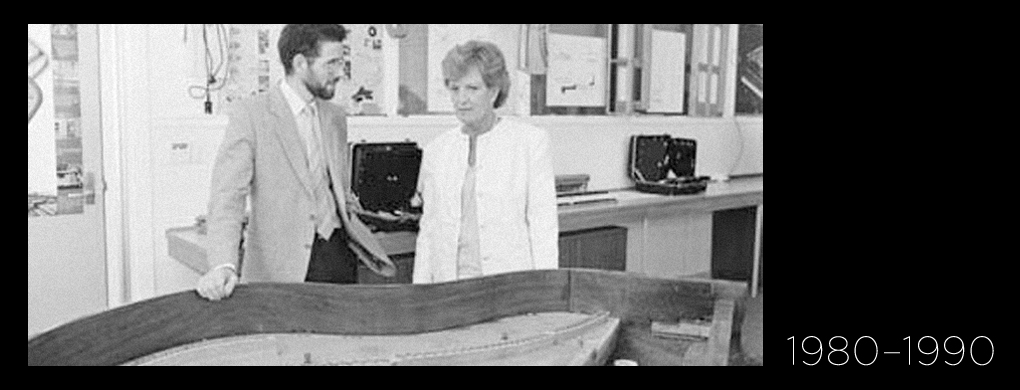Collingwood and Preston Technical Colleges become the Northern Metropolitan College of TAFE (NMCOT)

Both Collingwood and Preston were experiencing difficulties in the management of their operations throughout the 1980s, including running budget deficits.
In the case of Preston there were even allegations of impropriety and questions were asked in State Parliament. The obstructive culture of industrial relations was becoming a limitation on the effective management of the College. It was clear that the management structure of the College would need to undergo significant changes if the future was to be faced with confidence.
It was under these circumstances in 1988, that a new administration was appointed by the State Board to manage Preston College under the leadership of Brian MacDonald. Preston’s management structure was reviewed and revamped from top to bottom, and its financial difficulties addressed, through a plan to reduce and then eliminate operating and carry-forward deficits.
Plans were also made to improve the training facilities and to eliminate underachieving programs.
Although Collingwood Technical College was a lot smaller, it was experiencing similar difficulties to Preston. These were not yet as extreme but the risk was that Collingwood would also fail as an educational organisation unless action was taken.
The management team at Preston, led by Brian MacDonald as Interim Director, was therefore asked to investigate the possible amalgamation of Collingwood with Preston College to form a new entity.
The decision to proceed with the amalgamation was made by the State Training Board after reviewing all options in 1988. A Northern Metropolitan College of TAFE (NMCOT) Planning Committee was established.
NMCOT to become NMIT
In this way, two old and historically significant educational institutions were saved and transformed into a new organisation, to be known as the Northern Metropolitan College of Technical and Further Education (NMCOT). From this time on, it would be NMCOT (later to become NMIT) that would take technical education in Melbourne’s north into the 21st century.
The Interim Director and the new management structure became the leadership team of NMCOT by the end of 1989.The goals of the new organisation were ambitious but necessary: the merging of the Collingwood and Preston staff; the appointment of key personnel; improving the physical infrastructure; financial control and achievement of operating profits; appointment of a new NMCOT Council to oversee the decisions of the Director (CEO) and leadership team; and most of all, addressing the issue of growth for NMCOT.
While reorganisation was taking place, the need for vocational and further education in the metropolitan north and beyond was also growing. New campuses would be needed in the north and north-east; existing campuses at Collingwood and Preston had to be revamped.
In a report on the positive effects of amalgamation in 1989, the view was expressed that previously, budgeting was haphazard. With the establishment of NMCOT, a proper basis for budgeting was set up. This provided the foundation for growing the larger organisation.
Initially, many staff, while not actively opposing amalgamation, also did not actively support it; it was very much a ‘wait and see’ attitude.
An interim structure was put into place with rules to govern the relationship between the departments located at the two different campuses. Later, on letterhead, Preston College was referred to as ‘Preston College – a campus of the Northern Metropolitan College of Technical and Further Education’.
The interim administration was able to turn around a deficit at Collingwood and generate a small surplus in 1988 at Preston, eventually managing to have a budget for NMCOT which could produce much needed surpluses.
While the amalgamation proved difficult for many staff at Collingwood and Preston, there were undeniable benefits in becoming part of a larger organisation. Courses were offered at more than one location and if a class had low numbers it could be merged with another, so the course could continue. There was a wider choice of programs, and for students, there was no need to change colleges in order to change courses because there was now a common set of student records. This reduced administrative burdens for students and the College. In addition there was one Finance Department, one Personnel Department, one payroll system, a single set of policies such as for professional development and resources maximised to enable the upgrading of facilities.
Staff could teach a greater variety of courses and the larger staff complement meant staff could utilise their expertise across more campuses. Some could acquire greater experience while others could develop specialisation in key areas as required.
Traineeships gained the most. In Collingwood they had been operating in a vacuum; they were not part of a teaching division. Along with other labour market programs, they were part of a loose confederation of ‘special programs’. With NMCOT, traineeships became part of a Labour Market Programs Department with a coordinator appointed. This gave traineeships a sense of purpose; staff and students were able to relate to a coordinator, a Head of Department and the teaching division overall. Traineeships may not have survived in Collingwood if amalgamation with Preston had not taken place.